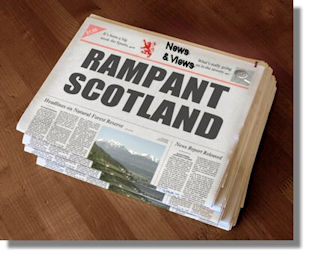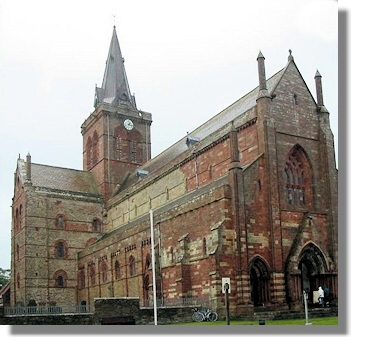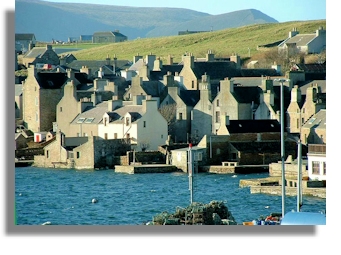<News and Views from Scotland

Orkney Scores in Quality of Life Survey
St Magnus Cathedral, Kirkwall, Orkney (graphic via Wikimedia Commons )
Orkney topped the list in the Bank of Scotland (BoS) survey for "Rural Quality of Life Survey" for the third year running, with Shetland in second place.Low rates of housebreaking, small classroom numbers and stunning scenery have seen Orkney and Shetland retaining their titles for the best rural quality of life in Scotland. The graphic on the right is of Stromness, the second largest town of Orkney is via Wikimedia Commons.
The Western Isles have been steadily moving up the index from sixth place in 2014 to third place now, sweeping aside Aberdeenshire and the Scottish Borders on their way.
BoS said this was partly due to the area having the lowest traffic flows at 69 cars per square kilometre - well below the Scottish average of 3,236 vehicles. Nicola Noble, BoS mortgage director, said,
"The Orkney Isles have once more scored very well in our Rural Quality of Life Survey, especially the highest employment rate and lowest number of burglaries."Much of the appeal of the top three places to live is the quiet pace of life and stunning scenery - albeit with a bit more rain than the British average. "In terms of personal well-being and general good health, Orkney residents score among the highest in Scotland. The area also performs strongly in terms of average weekly earnings and a high employment rate, long life expectancy and happiness."
Orkney registered the highest employment rate in Scotland at 86.3 per cent. Despite the oil crisis, Aberdeen still managed 84.7 per cent against a Scottish average of 73.8 per cent. (graphic on the left is of Aberdeen Harbour).
Aberdeenshire also had the highest weekly average earnings of £705, followed by Shetland at £631 and Perth & Kinross at £605. The Scottish average is £608 per week. The survey tracked where living standards were highest across the UK by ranking local performance in key areas covering the labour and housing markets, environment, education, health and personal well-being.
Perth and Kinross had the highest proportion of adults with the highest level of qualification (40.1 per cent), followed by Argyll & Bute with 37.7 per cent and Aberdeenshire with 37.1 per cent. These were all significantly above the Scottish average of 35.1 per cent.
The Western Isles boasted the biggest homes with an average of 4.9 habitable rooms, while the smallest were in Orkney, East Lothian, Highlands and Argyle and Bute - all with no more than 4.6 habitable rooms against the Scottish average of 4.6.
The Western Isles and Highlands shared the top spot for lowest population density, with just nine people per square kilometre, compared to a Scottish average of 481. At the other end of the scale, the most populated rural areas per square kilometre were East Lothian (150) and East Ayrshire (97).

Lewis Hills in Western Isles
East Lothian had the lowest average annual rainfall (824mm), while Argyll & Bute had the highest (2,165mm), against a Scottish average of 1,311mm.
Aberdeenshire was the healthiest area, with 96.8 per cent of households rating themselves in good or fairly good health, followed by Orkney (96.6) and Shetland (96.5). In Scotland 94.7 per cent of households rate themselves as in good or fairly good health.
Please give me whatever feedback comes to mind via david@rampantscotland.com.
David
23 April 2016Return to News and Views Index
Where else would you like to go in Scotland?




